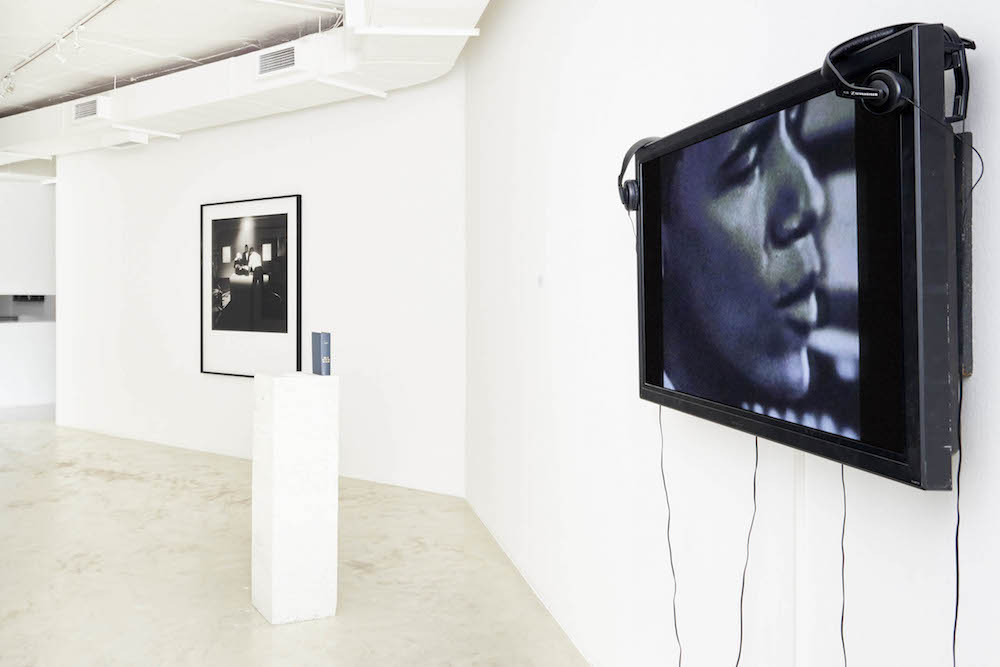Carrie Mae Weems: ‘The specific challenges facing South African youth now
“I am a woman who uses her voice. That I have laryngitis right now is hilarious to me,” says artist Carrie Mae Weems. By “voice,” Weems is being resolutely unambiguous, as she is one artist who finds joy in speaking about her creations.
When Weems (63) relives the impetus for her work, she stacks the metaphors, repeats and lingers over words and their sounds, as if the works are suddenly coming alive off the print to offer new meaning.
It’s intriguing to listen to, for Weems has the ability to create towering works that easily embody more than their own subjectivity. When she revisits them, as she often does
in talks with large audiences or in one-on-one interviews, one gets the distinct sense that the artist, as much as the interviewer, is still finding joy in peeling away hitherto undiscovered layers.
Weems, whose signature works include The Kitchen Table Series, 1990 (which explored the domestic space as a site of power), Roaming, 2006 (in which she explored the hidden power of architecture) and Constructing History, 2008 (which critiques the erasure of women from the historical narrative), recently exhibited in South Africa as part of the group show Africans in America (spread across the Goodman Gallery and the Johannesburg Art Gallery), which formed part of the Black Portraiture[s] III series.
From Constructing History, she exhibited a series of photographs, namely Mourning, The Assassination of Medgar, Martin, Malcolm and The Capture of Angela. The trio of photographs is accompanied by a 20-minute video called A Requiem to Mark the Moment.

Over at the Johannesburg Art Gallery, Weems screened another video off a television monitor, titled Before the Loss of You. The video is loosely about love in the time of struggle, but Weems’s spoken text and her use of archival images infuses the two lovers’ lives with the weight of history that turns their love of self into a wider exploration of global relations. Most importantly, diasporic relations.
Asked to review her work (particularly Before the Loss of You) through the prism of these sweeping themes, Weems is reluctant to “trump up something” but is unguarded and generous when recalling the beginnings of the video.
“Our relationships are profound, linking us across many boundaries and many distances,” she says, a little hoarsely. “So the struggle for South Africa, the struggle to bring Mandela out of prison, we were all deeply involved in for a very, very long time.
“When I started thinking about the Mandelas, I had wanted to make an opera about their relationship and about the ideas of truth and reconciliation. But that was a huge project and I didn’t quite have the chops for it.
“And then I saw something one morning, something very simple, a man bicycling his wife, girlfriend, companion or lover. That simple gesture opened up a door of possibilities and a way into exploring this key question about politics, about love, about this loss of trust. About love anchoring us through our social circumstance and about how we can be spun by the greater cause of social movements around us. How deeply they shape who we are and how ultimately we can express ourselves in the deepest possible way.”
I ask Weems whether the apartheid struggle was a cut-off point in the ability of the African diaspora — in particular Africans on the continent and the descendants in the United States — to form tangible bonds that will not only be illuminated by hindsight but also allow us the feeling of marching in step in this present moment.
“I think today we find ourselves trying to articulate our own particular circumstances,” says Weems.
“The specific challenges facing South African youth now, they are probably the same challenges affecting African American youth. Black Lives Matter is indicative of ongoing injuries and insults to the black body; it’s something we have to go about in our own particular way.
“We are dealing with a localised situation that has to be resolved with limited resources and I don’t want to say limited leadership, because it is not there, and now we have Donald Trump, as well, to contend with.”

Perhaps strangely, Weems believes the election of Trump may offer the much-needed room to “refocus our international interest because there is an interest now in what it means to have white supremacy rise across many nations”.
In this sense, Weems’s Constructing History, a work created in the same year United States President Barack Obama was elected into office, begins to articulate and underscore different issues to the ones it touched on when created.
In a public talk, Weems alludes to the fact that when she created the photographic series (characterised by constructed black-and-white images that mimic historical events and foreground the presence of women), she was partly emphasising all that had happened to make the moment of Obama a reality.
In light of the leadership vortex created by Trump’s emergence, Constructing History takes on the strident electricity of the moment.
“I think of Constructing History as being, as [writer] Amiri Baraka would say, ‘a changing same’. The social conditions in the United States have been very consistent even as we had a black man in the White House. A part of what is being underscored in Constructing History is that it is not necessarily a man who will completely change the face of a country.”
But there are further layers — layers that enhance the obvious in, perhaps, ghastly ways.

“Even if we have movements like Occupy Wall Street, or Black Lives Matter, these are relatively small movements to what there was in the Sixties. So this idea that leadership has been thwarted has all to do with this extraordinary backlash that took place against progressive thinking in the country.
“That it happened in the United States and the way that it happened in the United States is also very important because we think of ourselves as representing this highest standard of democracy, when in reality it is quite the opposite and has been for a long time.”
Because Weems’s work is often about women and “the changing same” it has forced her to reflect even more poignantly about relations between women in the US. “If the country is becoming a majority minority state, then white women are going to maintain their position of power in relation to white men,” she says, addressing how the white female vote was pivotal in electing Trump.
“If they are going to maintain their level of representation, their sense of privilege in relation to the country, then they have to side with white men at this point.”
With the global upheaval, it is clear that Weems’s work will continue to signpost history and therefore possible futures.
Although Weems may be oblivious to a generation of South African artists and cultural producers she has influenced, mostly aware of the prowess of ageing masters such as William Kentridge and Marlene Dumas, it is her insistent practice that will continue to remind us to be simultaneously mindful of the present, past and future.
Perhaps when Trump falls, the insistence of that lone black figure confronting the Palazzo dei Congressi in Rome (as part of the Roaming series) won’t seem so forlorn and Tiananmenesque.
Perhaps then, the thousands of women behind her will be visible in the frame.
Africans in America runs until December 17.